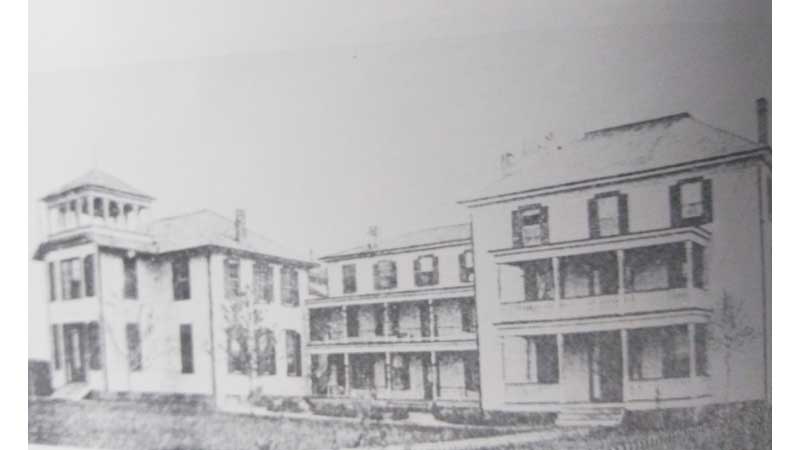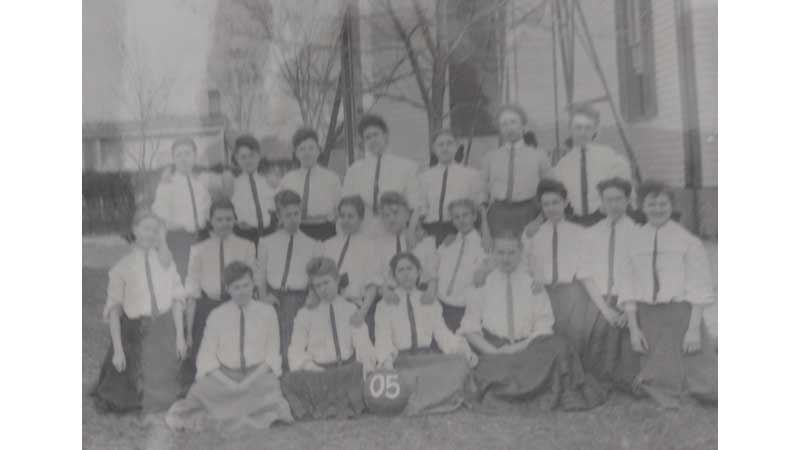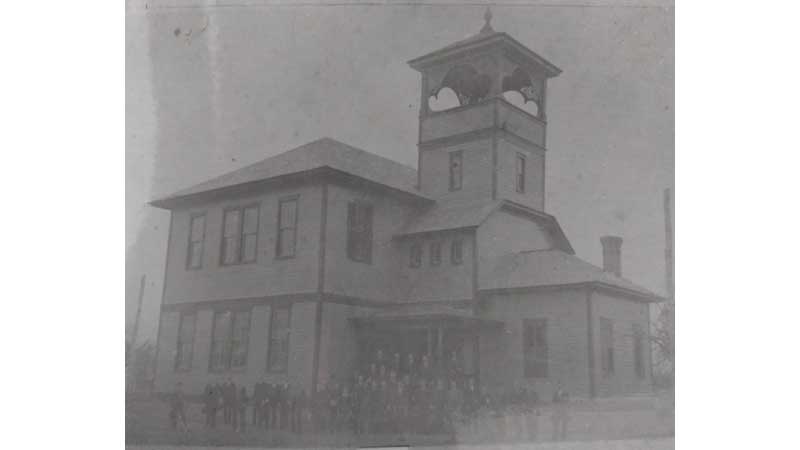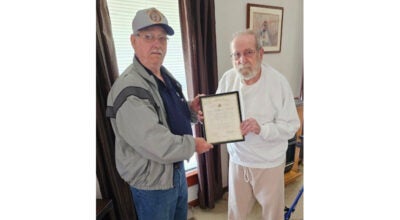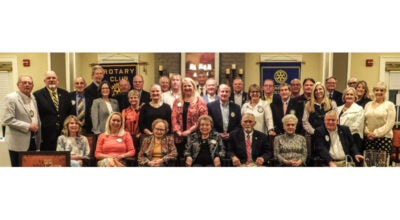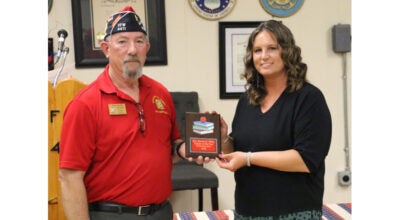Franklin Female Seminary opens
Published 4:20 pm Tuesday, May 4, 2021
|
Getting your Trinity Audio player ready...
|
By Clyde Parker
The Franklin Female Seminary, a boarding and day school for girls, was opened in 1894 and was located on Clay Street in Franklin on a lot that was later occupied by Franklin High School. (Now, Clay Court Apartments occupy that spot.) The Seminary came about following the closure of another school, dating back to 1886, that was located next to the old George Camp Farm just off Sedley Road. That school was for boys and girls. (In the present-day, a part of the Franklin High School property, on Crescent Drive, occupies that site.)
The Franklin Female Seminary, originally, consisted of two large frame buildings. One of the buildings was a three-story dormitory and the other was the schoolhouse which had two classrooms on the first floor and an auditorium and stage on the second floor. Later the two buildings were connected by a third building, also of three stories, which provided more classrooms and residential quarters for boarding students and members of the faculty.
On June 13, 1894, the circuit court of Southampton County chartered a company known as the Franklin Female Seminary Company, stock in which was held by 55 persons who paid in $5,445 for a total of 217 and 4/5 shares. Stockholders who paid in more than $200 each were six in number, namely: James L. Camp, Paul D. Camp, and Robert J. Camp – at $900 each; Josiah P. Gay, $500; C. C. Vaughan, Jr., $325; and John C. Parker, $225.
Trustees were: Josiah P. Gay, president; John C. Parker, vice president; A. L. Gardner, secretary; Robert J. Camp, treasurer; Dr. J. F. Bryant; Paul D. Camp; Dr. R. H. Cobb; D. A. Holland; I. E. Howell; J. R. Knight; and W. T. Pace.
Miss Eunice McDowell of Scotland Neck, North Carolina was appointed principal. Teachers were: Miss Annie E. Gay, Franklin; Miss Margaret D. Hargraves, Driver, and Miss Gertrude Norfleet, Franklin.
Mrs. Bettie Claud was the housekeeper.
After seven years as principal, Miss McDowell resigned her position to become lady principal of Baptist University in Raleigh, North Carolina. Succeeding her was Professor John B. Brewer of Wake Forest, North Carolina who for several years had been principal of the Baptist Female College in Murfreesboro, North Carolina. He resigned in 1907 to accept a position with Roanoke College in Danville. Replacing Brewer was Professor R. A. Henderson of Carson-Newman College, Jefferson City, Tennessee.
Two teachers married local men: Miss Laura Phillips Cole married R. E. L. Watkins and Miss Mary Webb of Fort Smith, Arkansas married John M. Camp.
In July 1912, the Franklin Female Seminary ceased to exist – due to indebtedness and declining enrollments. The buildings were sold at auction to James L. Camp, Josiah P. Gay, and John C. Parker – for $6220. Then, in August 1912, at a mass town meeting, the citizens of Franklin authorized the Town School Trustees to lease the property, including the buildings, for use as a high school – Franklin High School.
In 1921, when a decision was made to build a new modern brick Franklin High School, the old wooden buildings were physically moved to other locations. Two sections, the one on the very southern side of the complex and the one in the middle, were moved to a vacant lot facing on the western end of Fourth Avenue. The three-story section on the very northern side of the complex was moved to 318 Clay Street, a vacant lot, and was converted into an apartment house, named “Norris Apartments,” owned by Mrs. Alice Norris.
Temporarily, while the new high school was being built, the Franklin Elementary School building (built in 1905) on West Second Avenue was used for both elementary and high school students.
In 1922, when the new Franklin High School was completed, the two buildings that were moved to Fourth Avenue were converted into apartment buildings and were named and called, variously, “Camp Apartments” and/or “Fourth Avenue Apartments.” Now, those apartments are called “Fourth Avenue Co-Op.”
The Franklin Male Academy, a boarding and day-school for boys, was opened in 1890 — on the northwestern corner of Lee Street and Norfleet Street. Just west of the school was a three-story dormitory with an attached windmill which provided water for the facilities. In 1903, following a meeting of the Academy’s trustees, the school was converted to the Franklin Military Academy. Colonel Cecil C. Vaughan, Jr. consented to give his services as instructor in military science. A bright future was predicted for the school. The May 1, 1903, edition of “The Graphic,” Southampton’s newspaper of that time, reported that Henry Cobb, Franklin clothier and haberdasher, had secured a contract to make uniforms.
A combination drill ground and athletic field was located in an area off Lee Street – between Norfleet Street and the old Williams home at the corner of Lee Street and North High Street.
One of the high spots in the Academy’s first-year calendar was a trip by the cadet corps to Newport News, on Tuesday, April 5, 1904, for the launching of the battleship “Virginia.” The boys, in their U. S. Army regulation uniforms, made a splendid showing in a great military procession, witnessed by a throng estimated at 30,000 persons. On May 27 of that year, the closing exercises of the Academy were held in Franklin’s Fourth Avenue Armory Hall with Governor Andrew Jackson Montague making the address. In sweltering heat, the cadets escorted the Governor from the Southern Railroad Depot, on Union Street, to the Armory.
The Franklin Military Academy found competition with the movement for public schools too great to contend against. Too, three deaths among the Academy’s cadets, due to too-strenuous training, brought about a lot of public dissatisfaction. Consequently, after the session of 1907-1908 ended, the Academy closed its doors, never to open again.
Although John C. Parker Sr., Franklin Attorney, proposed in August 1909 that the Academy buildings, more particularly the dormitory, be converted into a hospital, nothing came of it. Ultimately, the property was sold to Dudley O. Norfleet of Franklin who converted the classroom building into a private residence, which it remains to this day. The dormitory was torn down and the materials were carted away.


